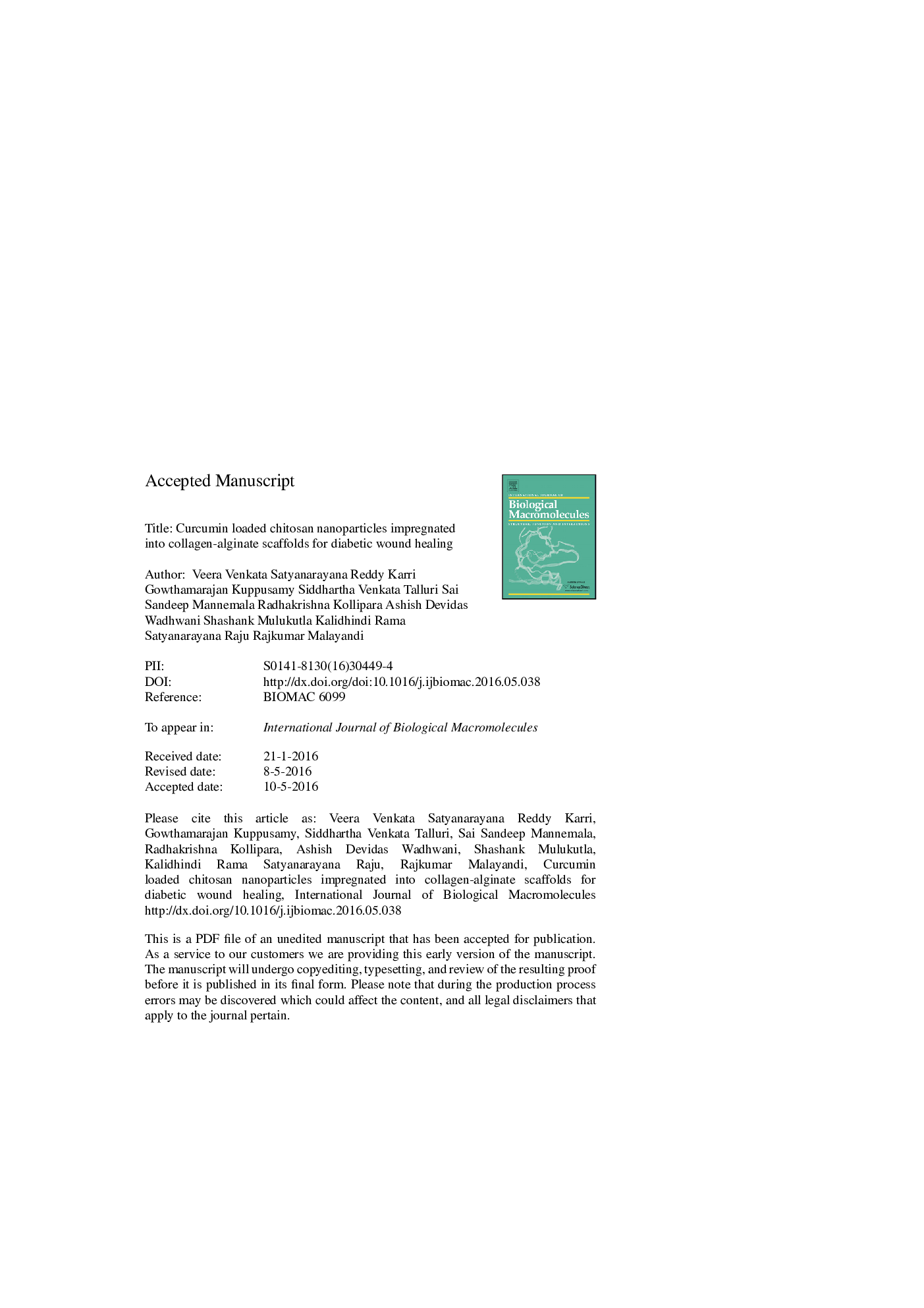| کد مقاله | کد نشریه | سال انتشار | مقاله انگلیسی | نسخه تمام متن |
|---|---|---|---|---|
| 5512135 | 1540226 | 2016 | 34 صفحه PDF | دانلود رایگان |
عنوان انگلیسی مقاله ISI
Curcumin loaded chitosan nanoparticles impregnated into collagen-alginate scaffolds for diabetic wound healing
ترجمه فارسی عنوان
کورکومین لایه نانوذرات کیتوزان را به داربست های کلاژن آلژینات آغشته به درمان زخم های دیابتی
دانلود مقاله + سفارش ترجمه
دانلود مقاله ISI انگلیسی
رایگان برای ایرانیان
کلمات کلیدی
کرکومین، کیتوزان، نانوذرات، کلاژن، داربست، زخم دیابتی،
موضوعات مرتبط
علوم زیستی و بیوفناوری
بیوشیمی، ژنتیک و زیست شناسی مولکولی
زیست شیمی
چکیده انگلیسی
Diabetic wounds are a common complication in patients with diabetes that often lead to amputation. Although the pathophysiology of diabetic wound is multifactorial, chronic inflammation and lack of tissue regeneration leads to impair wound healing in diabetes. Application of curcumin (CUR) which is a well-known anti-inflammatory and antioxidant agent could be better strategy in diabetic wound healing. However, low bioavailability and poor stability of CUR hinders its application. Hence, in present study a novel nanohybrid scaffold has been prepared by incorporating CUR in chitosan nanoparticles (CSNPs) to improve stability and solubility followed by impregnation of prepared CUR-CSNPs into collagen scaffold (nanohybrid scaffold) for better tissue regeneration application. The prepared CUR-CSNPs were evaluated for particle size, zeta potential, SEM, differential scanning calorimetry and X-ray powder diffraction studies and the novel nanohybrid is evaluated for morphology, biodegradability, biocompatibility, in vitro drug release and in vivo wound healing studies. The results of NPs evaluation suggest the better stability and solubility of CUR. The nanohybrid scaffold showed good in vitro characteristics in terms of better water uptake, biocompatibility and sustained drug availability. The results of in vivo wound closure analysis revealed that nanohybrid scaffold treated wounds contracted significantly (p < 0.001) faster than the wounds from the control and placebo scaffold groups. Further, the obtained results suggest that complete epithelialization with thick granulation tissue formation occur in nanohybrid scaffold group, whereas lack of compact collagen deposition in placebo scaffold group and presence of inflammatory cells in control group was observed. Hence, the present study suggests that the synergistic combination of CUR (anti-inflammatory and anti-oxidant), chitosan (sustain drug carrier, wound healing) and collagen (established wound healer as scaffold) is a promising strategy to address various pathological manifestations of diabetic wounds and have better wound healing capability.
ناشر
Database: Elsevier - ScienceDirect (ساینس دایرکت)
Journal: International Journal of Biological Macromolecules - Volume 93, Part B, December 2016, Pages 1519-1529
Journal: International Journal of Biological Macromolecules - Volume 93, Part B, December 2016, Pages 1519-1529
نویسندگان
Veera Venkata Satyanarayana Reddy Karri, Gowthamarajan Kuppusamy, Siddhartha Venkata Talluri, Sai Sandeep Mannemala, Radhakrishna Kollipara, Ashish Devidas Wadhwani, Shashank Mulukutla, Kalidhindi Rama Satyanarayana Raju, Rajkumar Malayandi,
